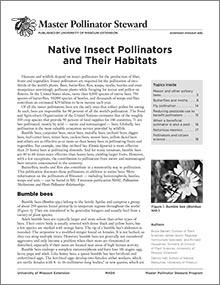

Missouri Weed Seeds, Page 28
Reviewed
Besides being considered weedy plants, several members of Liliaceae (Lily family) are commonly cultivated. Such members include asparagus, yucca and many cultivars of daylilies.
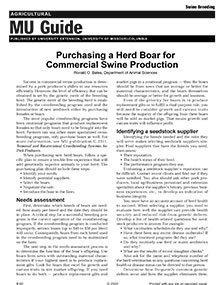
Purchasing a Herd Boar for Commercial Swine Production
Reviewed
Selecting the right herd boar is crucial for enhancing genetics in commercial swine production. This guide outlines key steps for successful boar acquisition.
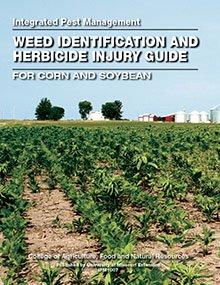
Weed Identification and Herbicide Injury Guide for Corn and Soybean
Reviewed $37
Weeds can significantly reduce corn and soybean yields. View photos of 141 weed species at different stages of development and learn to identify them in this publication. Also see photos and descriptions of symptoms for herbicide-injured plants.
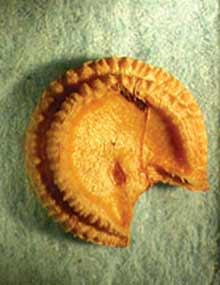
Missouri Weed Seeds, Page 31
Reviewed
Although there are about 75 genera of Menispermaceae (Moonseed famiy), Missouri has only three known genera.
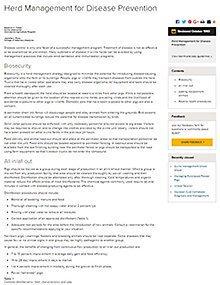
Herd Management for Disease Prevention
Reviewed
This publication provides guidance on preventing disease in swine herds through biosecurity measures, sanitation, and immunization programs.
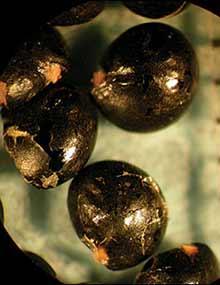
Missouri Weed Seeds, Page 34
Reviewed
Phytolaccaceae (Pokeweed family) is a relatively small plant family that has only one genus occurring in Missouri, common pokeweed.
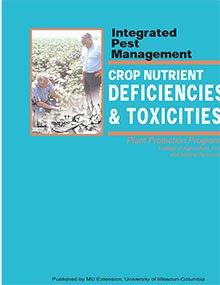
Crop Nutrient Deficiencies and Toxicities
Reviewed
Editor's note
The following abstract describes a publication that is only available as a downloadable PDF.
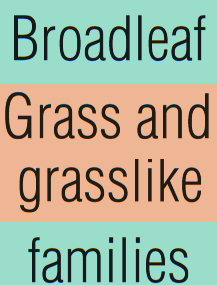
Missouri Weed Seeds, Page 02
Reviewed
See the common names of the broadleaf and the grass and grasslike plant families covered in this publication.
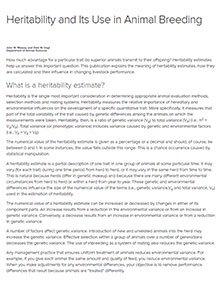
Heritability and Its Use in Animal Breeding
Reviewed
Heritability has a large influence on livestock performance. Visit our website to learn about Heritability and Its Use in Animal Breeding.
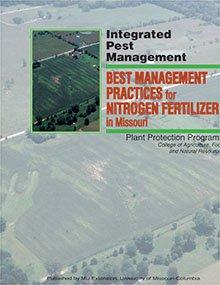
Best Management Practices for Nitrogen Fertilizer in Missouri
Reviewed
Learn how to manage nitrogen fertilizer in crops to boost yields, reduce losses, and enhance environmental outcomes through best practices.
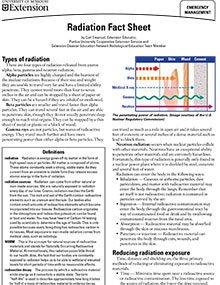
Radiation Fact Sheet
Reviewed
Explains types of radiation—alpha, beta, gamma, neutron—their sources, health effects, and ways to reduce exposure.
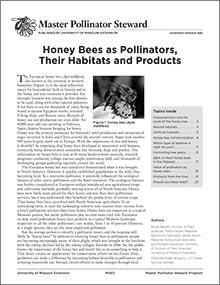
Honey Bees as Pollinators, Their Habitats and Products
New
Learn about the honey bee, from its life cycle, to its various races, to its pest problems, the benefits it provides, and how we can aid its success in this University of Missouri Extension guide. Become a Master Pollinator Steward!
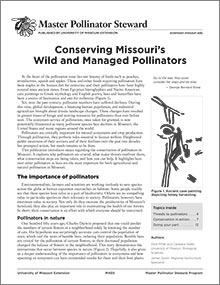
Conserving Missouri's Wild and Managed Pollinators
New
Pollinators are critically important for natural ecosystems and crop production. Learn why pollinators are crucial, the major threats confronting them, conservation steps being taken, and how you can help in this University of Missouri Extension guide.

Squeezed by Rising Food Prices?
Reviewed
Small changes in your shopping habits can mean saving money at the grocery store. Check for tips on this page that can work for you and your family.

Challenges and Choices: Fit for Life
Reviewed
Practical tips to boost energy and health by adding fruits and vegetables to meals, snacks, and busy lifestyles.

Preserve It Fresh, Preserve It Safe: 2018, No. 4 (July/August)
New
Discover the Seasonal and Simple app, your guide to selecting, preparing, and enjoying fresh, in-season produce with ease.
Collective Bargaining 2: Behavioral Factors Influencing Union Bargaining Power - Page 2
New
Not all local unions approach the collective bargaining process from the same scope of institutional power, nor should they. Collective bargaining is not a ‘one size fits all’ undertaking. In some cases, a local may be responsible for all aspects of the bargaining process with the international union filling only an advisory, consultative or oversight function.
Collective Bargaining 2: Behavioral Factors Influencing Union Bargaining Power - Page 5
New
Membership support of and involvement in the bargaining process Membership support of and involvement in the bargaining process
Economic security and workplace representation are important goals of the union in the bargaining process.
Collective Bargaining 2: Behavioral Factors Influencing Union Bargaining Power - Page 3
New
Organizational behavior Organizational behavior
When individuals are brought together in any social setting, they may collectively evolve into one of several forms of social organization.
Collective Bargaining 2: Behavioral Factors Influencing Union Bargaining Power - Page 6
New
Building an effective bargaining committee Building an effective bargaining committee
The primary factors for the determination of who will serve on the bargaining committee are the constitution and by-laws of the orga

Collective Bargaining 2: Behavioral Factors Influencing Union Bargaining Power
New
Explore behavioral factors that influence union bargaining power, including solidarity, organizational dynamics, and member engagement strategies.
Collective Bargaining 2: Behavioral Factors Influencing Union Bargaining Power - Page 4
New
Strategic and tactical planning Strategic and tactical planning
One method for taking advantage of both the common and diverse interests of the membership of a local union is to approach bargaining as one aspect of a broader process of stra
Tree Pests: Emerald Ash Borer - Page 3
New
Where EAB has been found
EAB has spread significantly since its original detection in the Detroit area back in 2002, and as one can see from this map, there are still a lot of vulnerable locations across the United States.
Tree Pests: Emerald Ash Borer - Page 4
New
Track EAB activity for 2020
Statewide for 2020, EAB activity is now declining. However, symptoms such as bark flecking and epicormic sprouting will continue to show up on infested trees.
